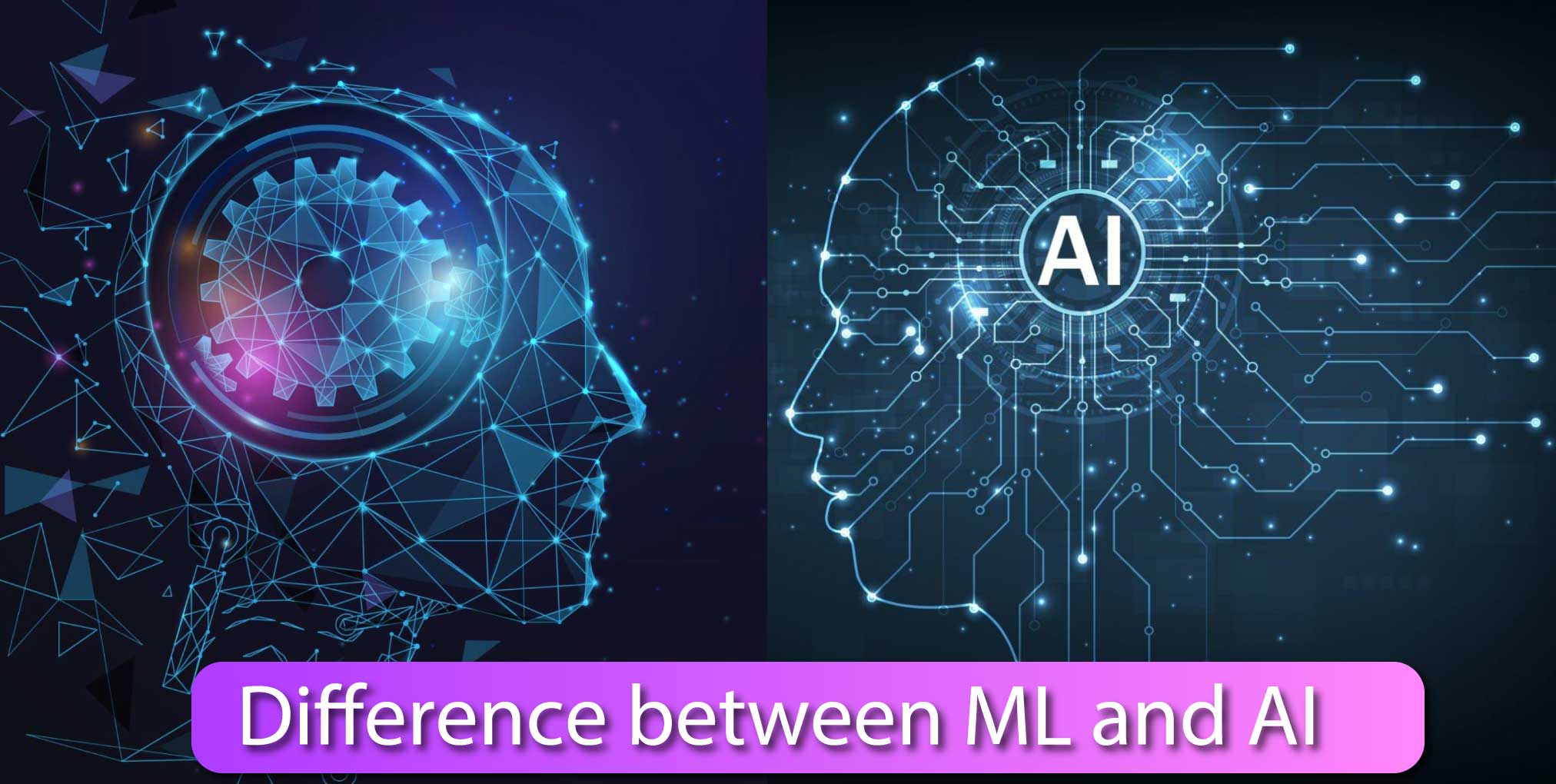

October 30, 2023
Artificial Intelligence (AI) and Machine Learning (ML) concepts frequently intersect, leading to confusion regarding their differences. This blog will clarify the difference between Artificial Intelligence and Machine Learning, giving you a clear understanding of these essential concepts.
AI is a broad term for computer software designed to imitate human cognitive abilities for executing complex tasks and learning from them. Machine Learning is a subset of Artificial Intelligence. ML focuses on developing algorithms and statistical models. It allows systems to improve their performance on a specific task over time.
Presently, most AI relies on machine learning, resulting in the frequent interchangeability of these terms. It’s important to understand that AI aims to mimic human-like thinking using computer software. ML is just one way to do this. Machine Learning development is a vital component that enables systems to learn and adapt from data.
Similarly, let’s also talk about the difference between machine learning deep learning and artificial intelligence. Deep learning is a specialized form of machine learning using neural networks to model complex patterns and is a subset of both AI and ML.
So, when it comes to AI vs ML, what sets them apart, and how do they relate to each other? Let’s discuss these concepts individually.
Why is machine learning important? Machine learning is vital for using the power of data to make predictions and enhance decision-making. By utilizing machine learning, businesses can efficiently uncover hidden patterns and improve customer experiences.
Additionally, Machine learning can be used to train chatbots and deliver responsive customer support. It helps recommend movies on streaming platforms and detects fraud in financial transactions. This technology spans healthcare, finance, and technology.

ML is primarily concerned with developing algorithms that can learn from data. It has applications in various domains, including:
AI aims to create systems that can perform various tasks, often involving complex reasoning and decision-making. These tasks include:
ML focuses on “learning” from data to improve performance on specific tasks. It doesn’t necessarily imply understanding or reasoning.
AI aims to imbue machines with human-like “intelligence,” which includes the ability to understand, reason, and adapt to a wide range of tasks, often in a way that appears intelligent to humans.
AI aims to replicate human-like cognition and problem-solving, sometimes involving tasks like natural language understanding, computer vision, and decision-making.
While capable of achieving impressive results, ML may only sometimes achieve human-like cognition, depending on the specific algorithms and data used.
Flexibility is another Difference Between Artificial Intelligence and Machine Learning. Artificial Intelligence systems are designed with flexibility, allowing them to handle a wide range of tasks in different domains. This flexibility arises from combining various AI techniques and the ability to reason and apply knowledge across diverse situations.
Machine Learning models, in contrast, are typically developed for specific tasks or domains. They excel in those areas but require retraining to handle new applications.
ML heavily relies on structured data and makes decisions based on patterns within that data.
AI, on the other hand, can make more autonomous decisions, considering a wide range of information beyond just predefined patterns.
Machine learning vs Artificial Intelligence tells that ML is task-focused, and AI is more versatile. These differences are crucial when applying these technologies in various real-world contexts.
ML models can adapt and improve their performance as they encounter more data. However, their adaptability is generally limited to the specific task they were trained for.
AI systems are designed to be more adaptable and capable of handling a broader range of tasks. They often involve multiple technologies and techniques, including ML.
The combination of artificial intelligence and machine learning offers many advantages to organizations. As the complexity of data expands, intelligent systems play a pivotal role in enabling companies to automate tasks.
Here are some of the key business advantages of using the synergy of artificial intelligence and machine learning:

Integrating machine learning and artificial intelligence enables organizations to use a broader spectrum of unstructured and structured data sources. This comprehensive data analysis provides a deeper understanding of trends.
AI and ML contribute to more informed and swifter decision-making processes by enhancing data quality and expediting data processing. This increased efficiency in decision-making can be a game-changer for businesses.
The implementation of AI and ML solutions results in increased operational efficiency, reducing costs. These technologies can streamline processes, automate routine tasks, and optimize resource allocation.
AI and ML empower employees by seamlessly integrating predictive analytics and insights into business reporting and applications. This means that employees can make data-driven decisions and benefit from actionable information.
In conclusion, this blog has highlighted the Difference Between Artificial Intelligence and Machine Learning. Understanding these differences is key to simplifying the world of AI and ML.
Machine learning is a subset of artificial intelligence, specializing in data-driven tasks. Artificial intelligence encompasses a broader range of techniques and goals, striving to replicate human-like intelligence across diverse tasks. Recognizing the distinction between these two concepts is essential for businesses looking to use the power of AI and ML effectively.